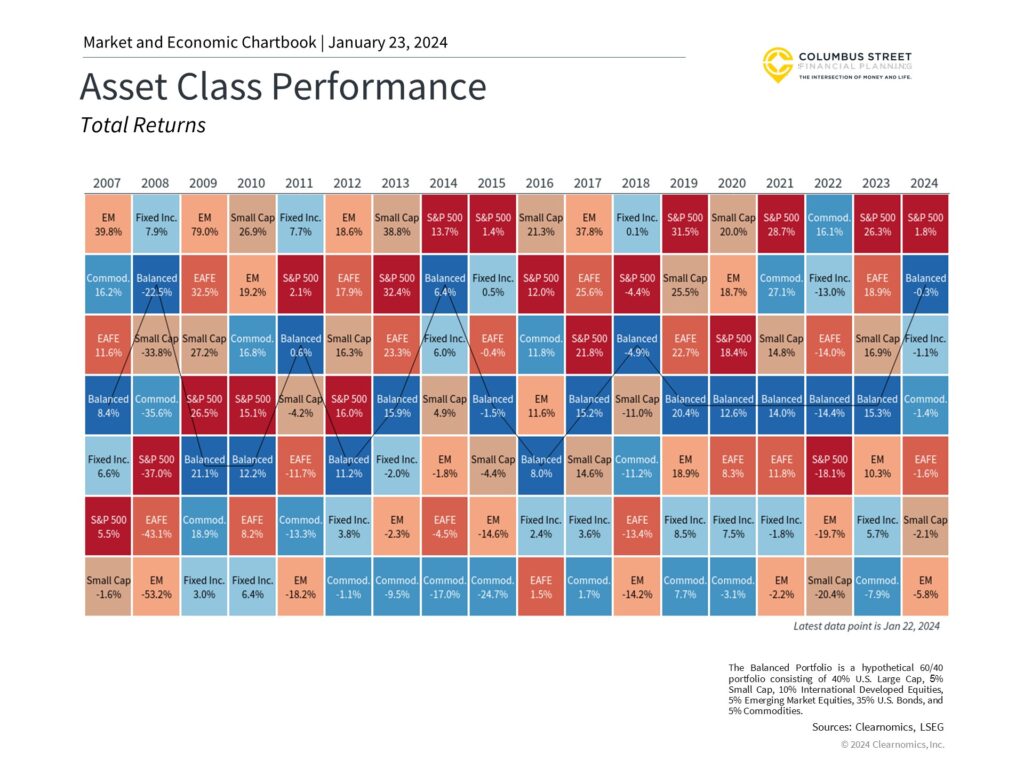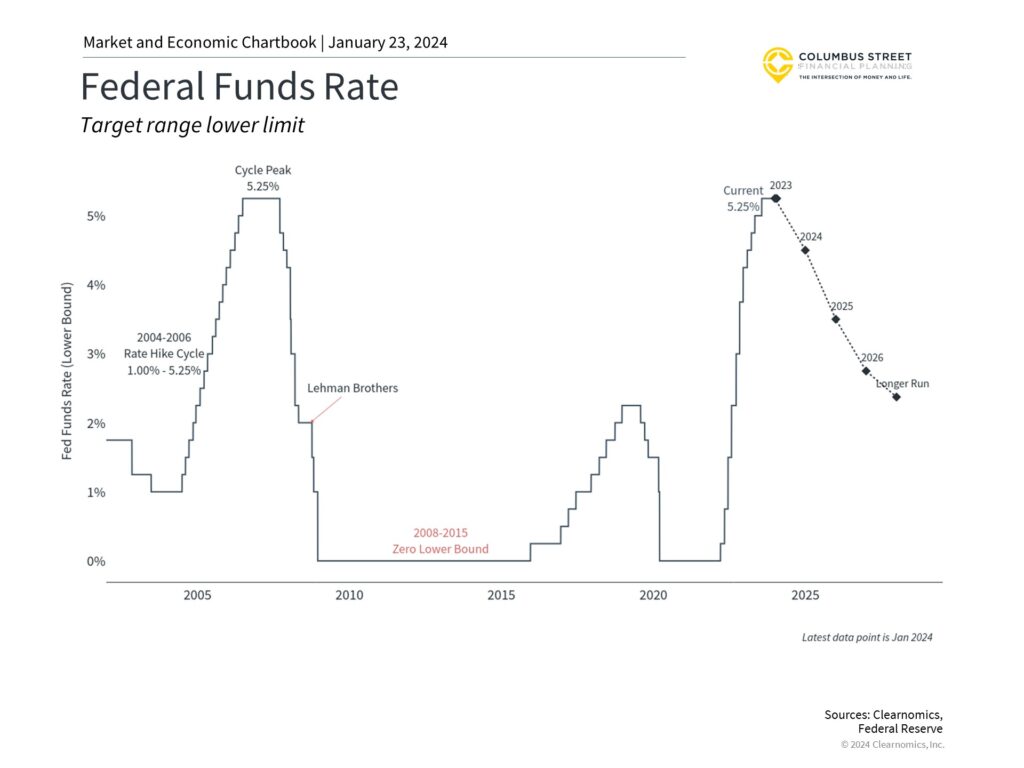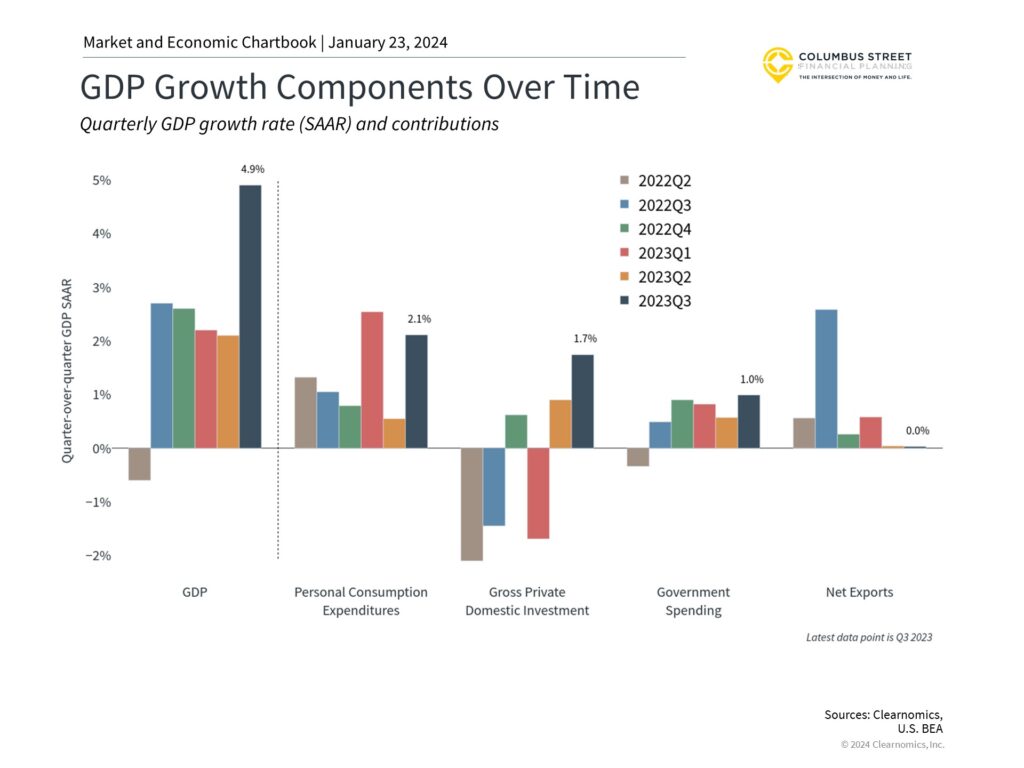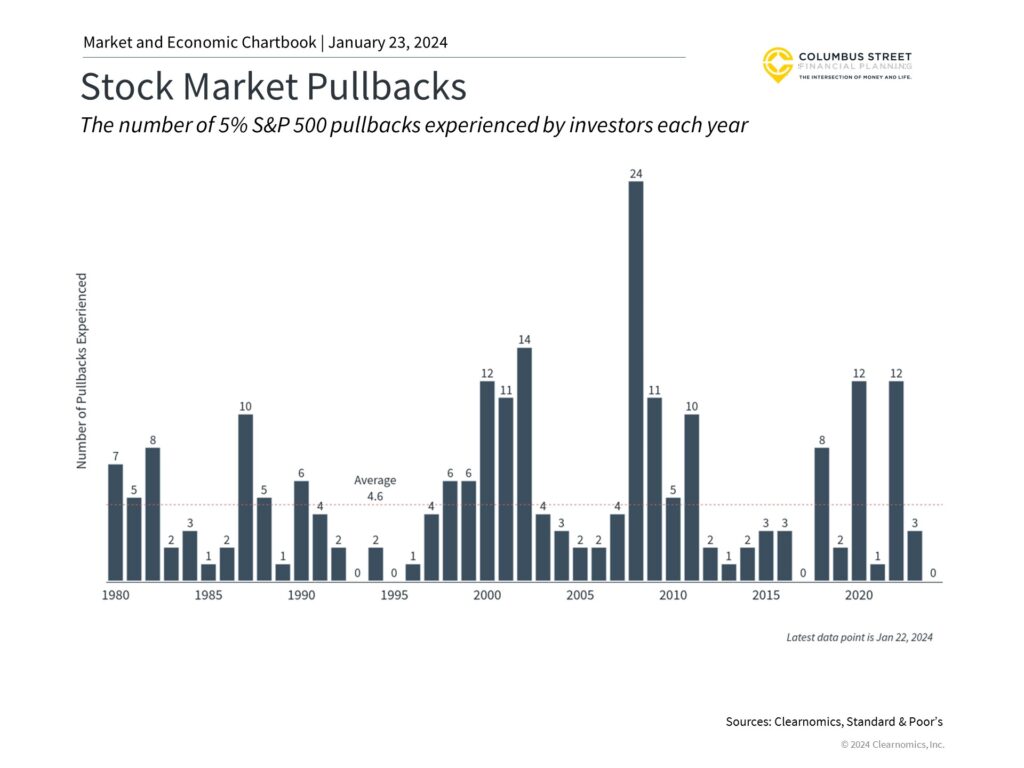2023 marked an inflection point for markets with strong gains across stocks and bonds. The S&P 500, Dow, and Nasdaq generated exceptional returns of 26.3%, 16.2%, and 44.7% with reinvested dividends last year. The S&P has come full circle and is now only a fraction of a percentage point below the all-time high from exactly two years ago. The U.S. 10-year Treasury yield climbed as high as 5% in October before falling to end the year around 3.9%, pushing bond prices higher in the process. International stocks also performed well, with developed markets returning 18.9% and emerging markets 10.3%. What drove these results, and how could they impact investors in 2024?
Perhaps the most important lesson of 2023 for everyday investors is that news headlines and economic events don’t always impact markets in obvious ways. Last year’s positive returns occurred despite historic challenges, including the worst banking crisis since 2008, rapid Fed rate hikes, debt ceilings and budget battles in Washington, the ongoing war in Ukraine, the conflict in the Middle East, cracks in China’s economy, and many more. If you had shared these headlines with an investor at the start of 2023, they would probably have assumed there would be a worsening bear market or a deep recession.
Why isn’t this what happened? At the risk of oversimplifying, inflation has been the key factor driving markets over the past few years. High inflation affects all parts of the markets and economy, including forcing the Fed to raise interest rates, slowing growth, hurting corporate profits, dampening consumer spending, and dragging on bond returns. This is exactly what occurred in 2022, but many of these effects reversed in 2023 as inflation rates improved.
For instance, the headline Consumer Price Index jumped 9.1% in June 2022 on a year-over-year basis but only grew 3.1% this past November. Unfortunately for consumers and retirees, this does not mean prices will fall back to pre-pandemic levels – only that they will rise more slowly. For markets, however, what matters is that the rate of change is slowing and that core inflation could gradually approach the Fed’s 2% long-run target.
Thus, the recession anticipated by markets a year ago has not yet occurred. While many still expect economic growth to slow this year, it’s not unreasonable to suggest that the Fed could achieve a “soft landing” in which inflation stabilizes without causing a recession. This is why both markets and Fed forecasts show that they could begin to cut policy rates by the middle of the year.
What does this mean for the year ahead? If 2022 was characterized by the worst inflation shock in 40 years, leading to a bear market in stocks and bonds, 2023 saw many of these factors turn around. These trends could continue if the Fed does begin to ease monetary policy. Of course, much is still uncertain, and investors should always expect the unexpected regarding market, economic, and geopolitical events. After all, markets never move up in a straight line, and even the best years experience several short-term pullbacks.
The past year has shown us that it’s important to stay invested and diversified across all phases of the market cycle rather than try to predict exactly what might happen daily, weekly, or monthly. Below are five key insights into the current market environment that will likely be important in 2024.







